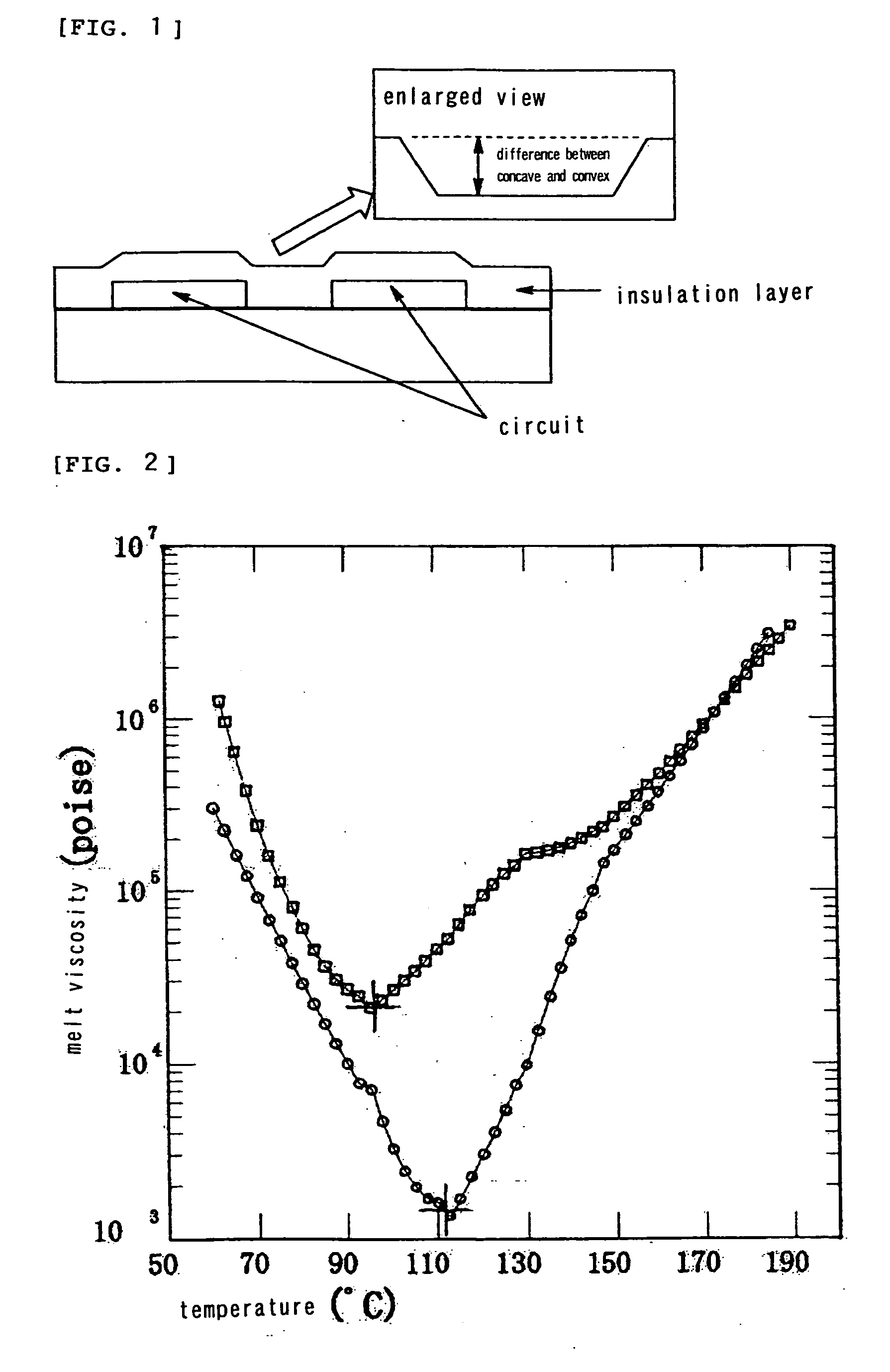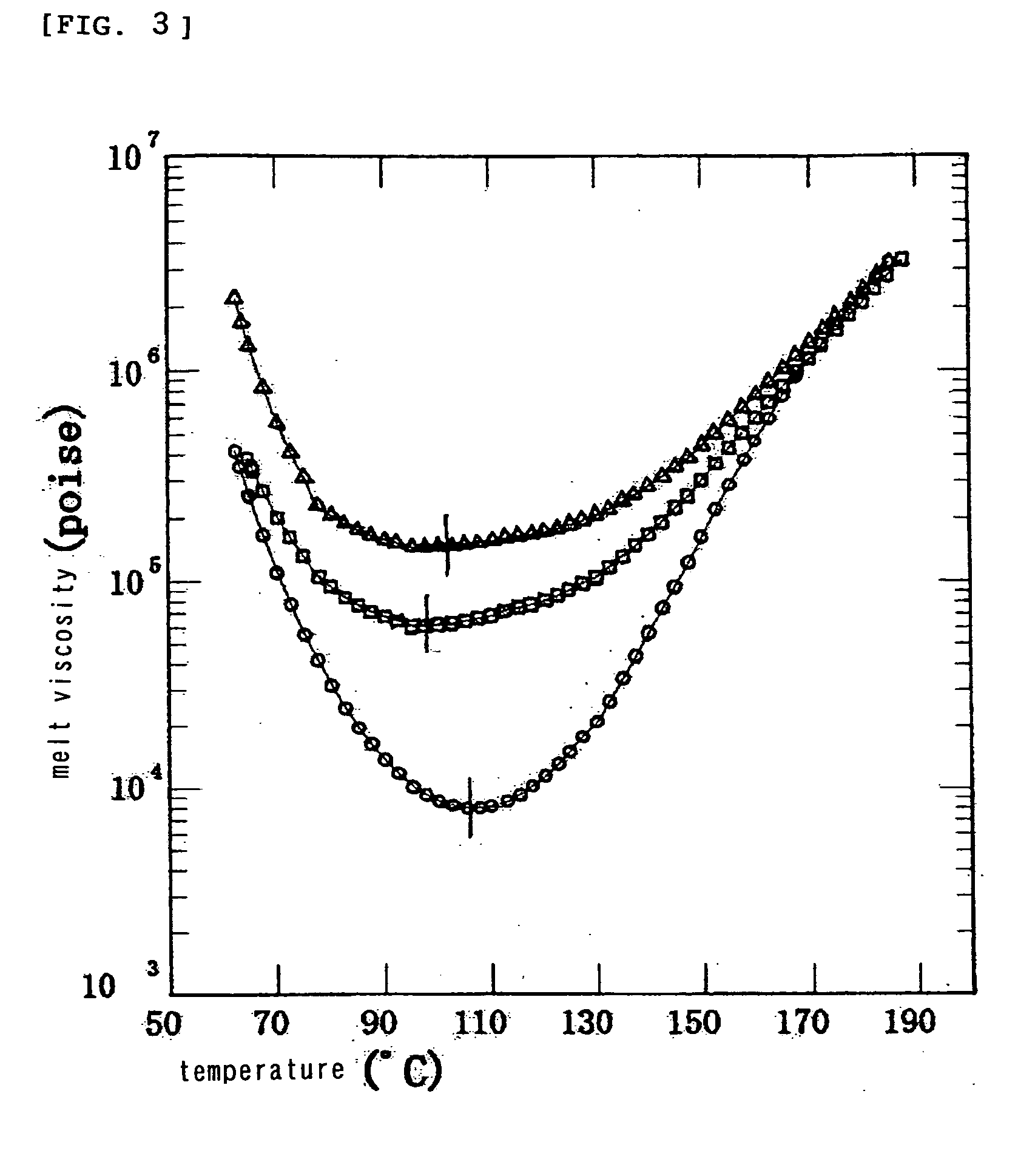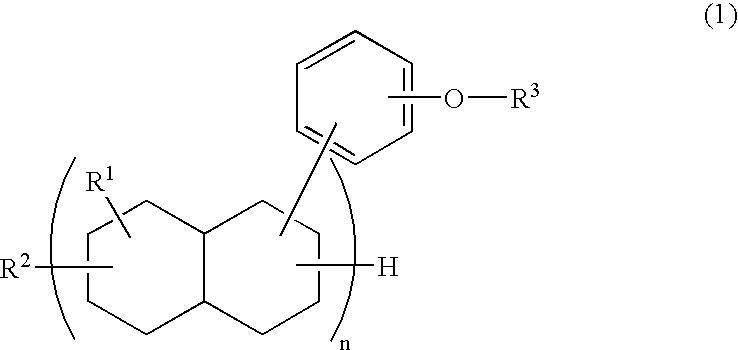Resin composition, adhesive film using the same and multilayer printed circuit board
a technology of printed circuit board and composition, applied in the direction of film/foil adhesives, process and machine control, etc., can solve the problems of reducing the moisture resistance and electrical properties such as the dielectric dissipation factor, and the difficulty in forming fine circuits, so as to prevent the adhesion of dust and excellent heat resistance and electrical properties
- Summary
- Abstract
- Description
- Claims
- Application Information
AI Technical Summary
Benefits of technology
Problems solved by technology
Method used
Image
Examples
example 1
[0131] 40 parts by weight of a prepolymer of bisphenol A dicyanate (Prima Set BA230S75 of Lonza Japan Ltd., methyl ethyl ketone(MEK) varnish with a cyanate equivalent of approximately 232 and a nonvolatile content of 75%), 40 parts by weight of a vinylbenzyl resin (V-500OX manufactured by Showa Highpolymer Co., LTD., toluene varnish with a nonvolatile content of 65%), 15 parts by weight of a phenoxy resin varnish having a biphenyl skeleton (YL6954BH30 manufactured by Japan Epoxy Resins Co., Ltd., MEK / cyclohexanone varnish with a weight average molecular weight of 38,000 and a nonvolatile content of 30%), 2 parts by weight of a 1% N,N-dimethylformamide solution of cobalt (II) acetylacetonate, and 40 parts by weight of spherical silica (average particle size 1.1 μm) were added to produce a resin composition varnish. The varnish was coated on a PET film having a thickness of 38 μm with a die coater such that the thickness after drying was 40 μm, and dried at from 80 to 120° C. for 10 m...
example 2
[0132] 40 parts by weight of a prepolymer of bisphenol A dicyanate (Prima Set BA230S75 of Lonza Japan Ltd., MEK varnish with a cyanate equivalent of approximately 232 and a nonvolatile content of 75%), 20 parts by weight of a vinylbenzyl resin (V-5000X manufactured by Showa Highpolymer Co., LTD., toluene varnish with a nonvolatile content of 65%), an acrylate of a biphenyl-type epoxy resin (ZCA-251H manufactured by Nippon Kayaku Co., Ltd., propylene glycol monomethyl ether acetate with a nonvolatile content of 70%), a bisphenol A-type epoxy resin (Epikote 828EL with an epoxy equivalent of 185, manufactured by Japan Epoxy Resins Co., Ltd.), 20 parts by weight of a phenoxy resin varnish having a biphenyl skeleton (YL6954BH30 manufactured by Japan Epoxy Resins Co., Ltd., MEK / cyclohexanone varnish with a weight average molecular weight of 38,000 and a nonvolatile content of 30%), 3 parts by weight of a 1% N,N-dimethylformamide solution of cobalt (II) acetylacetonate, 0.7 part of a photo...
example 3
[0133] 40 parts by weight of a prepolymer of bisphenol A dicyanate (Prima Set BA230S75 of Lonza Japan Ltd., MEK varnish with a cyanate equivalent of approximately 232 and a nonvolatile content of 75%), 40 parts by weight of a vinylbenzyl ether of a Xylok-type phenol resin (SA-1× manufactured by Showa Highpolymer Co., LTD., toluene varnish with a nonvolatile content of 75%), 4 parts by weight of a 1% N,N-dimethylformamide solution of cobalt (II) acetylacetonate, and 40 parts by weight of spherical silica (average particle size 1.1 μm) were added to produce a resin composition varnish. The varnish was coated on a PET film having a thickness of 38 μm with a die coater such that the thickness after drying was 40 μm, and dried at from 80 to 120° C. for 10 minutes to obtain an adhesive film.
Measurement of the Curing Behavior of Resin Compositions.
[0134] The dynamic viscoelasticities of the resin composition layer samples of the adhesive films obtained in Examples 1 and 2 and the same r...
PUM
| Property | Measurement | Unit |
|---|---|---|
| molar ratio | aaaaa | aaaaa |
| Tg | aaaaa | aaaaa |
| Tg | aaaaa | aaaaa |
Abstract
Description
Claims
Application Information
 Login to View More
Login to View More - R&D
- Intellectual Property
- Life Sciences
- Materials
- Tech Scout
- Unparalleled Data Quality
- Higher Quality Content
- 60% Fewer Hallucinations
Browse by: Latest US Patents, China's latest patents, Technical Efficacy Thesaurus, Application Domain, Technology Topic, Popular Technical Reports.
© 2025 PatSnap. All rights reserved.Legal|Privacy policy|Modern Slavery Act Transparency Statement|Sitemap|About US| Contact US: help@patsnap.com



